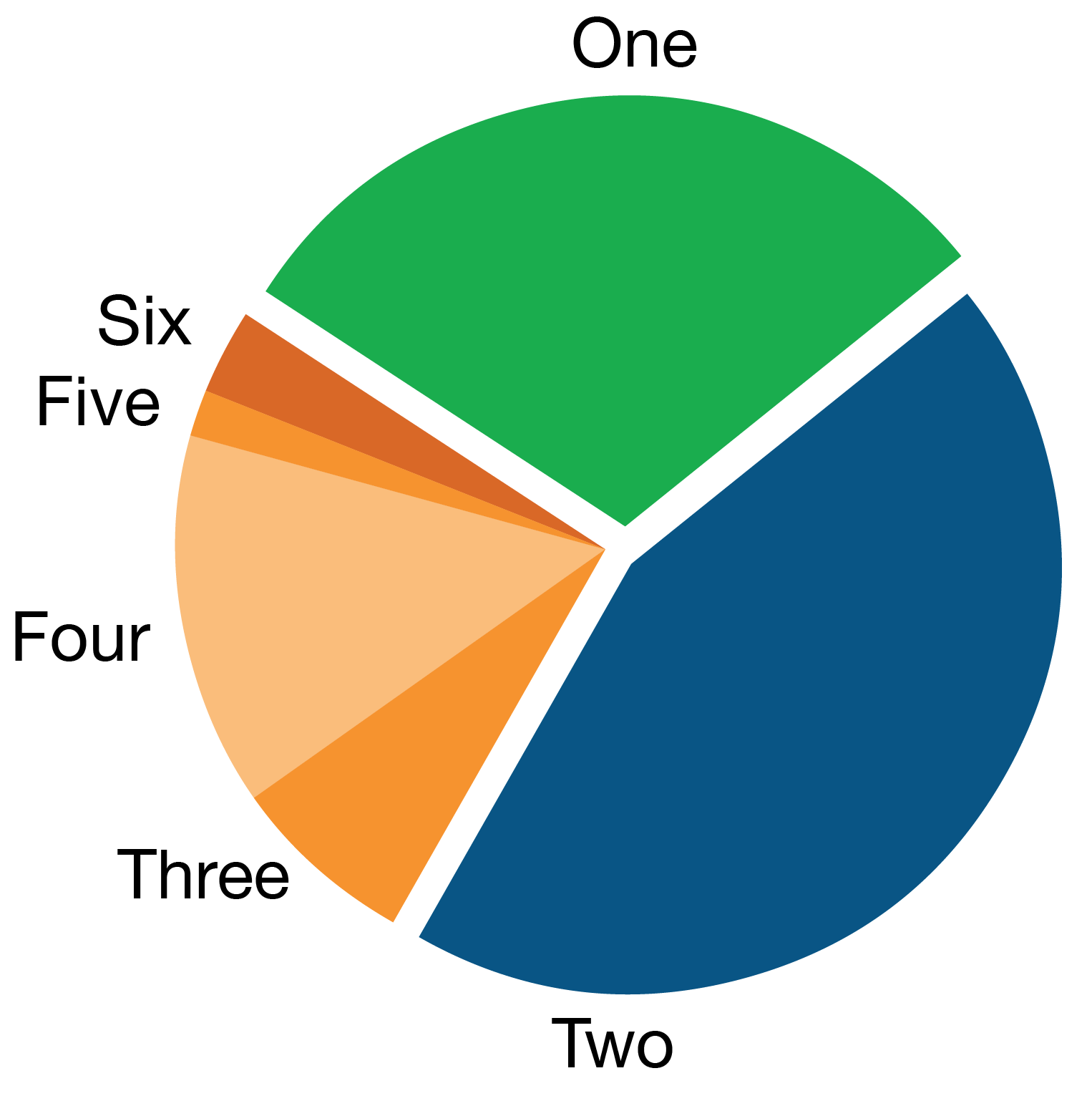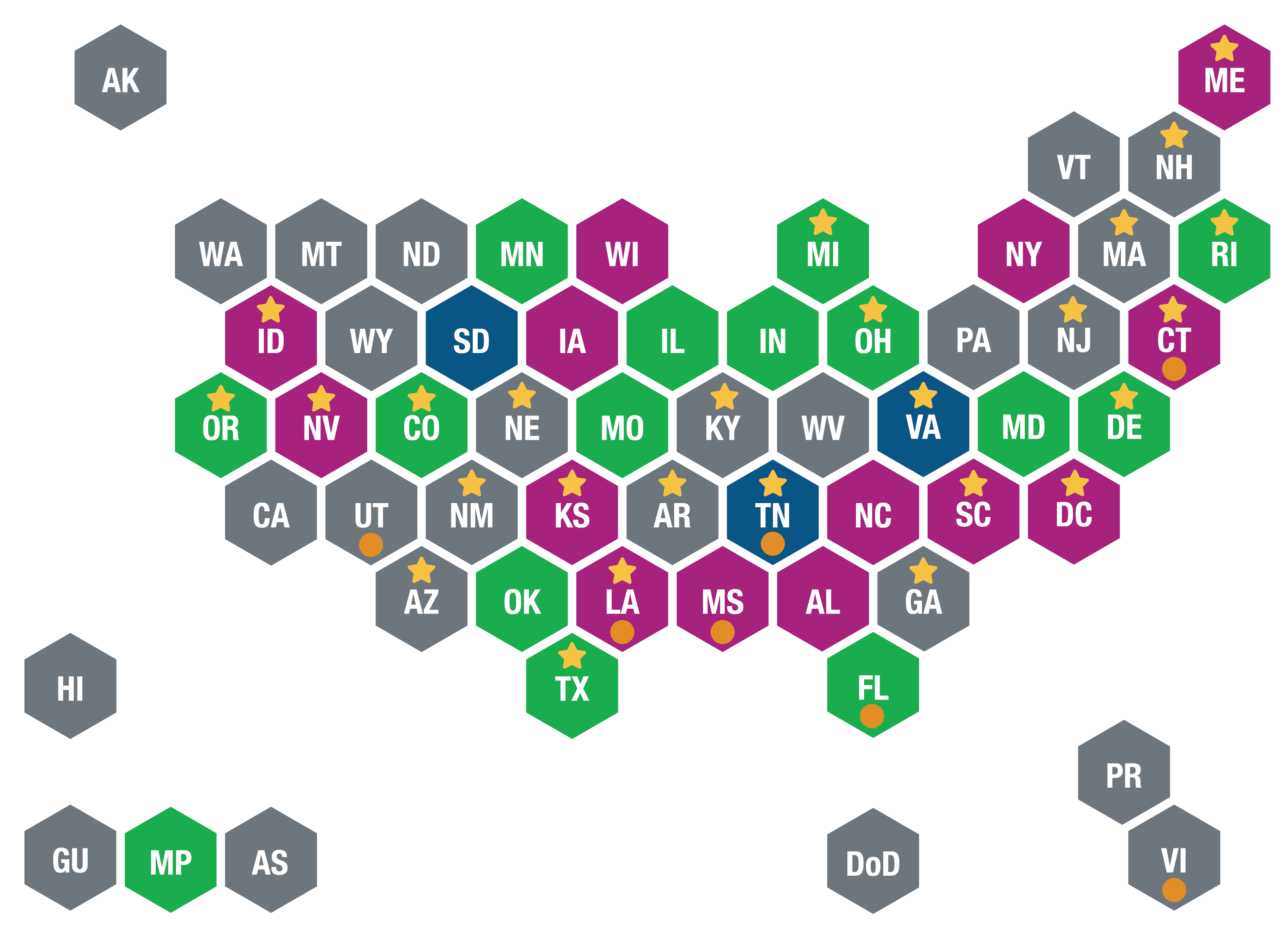Summary of State and Jurisdictional Eligibility Definitions for Infants and Toddlers with Disabilities Under IDEA Part C
Updated October 6, 2021, 7:34 AMThis infographic summarizes national variations in eligibility policies for infants and toddlers from birth to age 3 enrolling in early intervention programs under Part C of IDEA. Staff from ECTA and DaSy reviewed online documentation of eligibility policies for states, territories, and the Department of Defense, collectively referred to as "states", that receive Part C funding.
On This Page
Eligibility for IDEA Part C Services
Each state's definition of an infant or toddler with a disability (34 CFR §303.21) must include an infant or toddler with:
- A developmental delay.
- A diagnosed physical or mental condition with a high probability of resulting in developmental delay.
- States receiving Part C funds are required to develop a rigorous definition of developmental delay, which specifies the level of delay in functioning that constitutes a developmental delay (34 CFR §303.111).
A state may choose to serve infants and toddlers at risk. "At risk" means children under three years old who would be at risk of experiencing a substantial developmental delay if early intervention services were not provided. Eight states currently serve infants and toddlers at risk.
Selected Diagnosed/Established Conditions
This map highlights states whose eligibility policies include selected diagnosed or established conditions, although specific definitions and criteria vary by state.
Only states whose eligibility policies contain language that goes beyond the descriptions in the Part C regulations are identified on the map. For example, states whose policies regarding substance exposure use only the regulatory language (i.e., "...disorders secondary to exposure to toxic substances, including fetal alcohol syndrome") are not identified.
Map Data Detail
Low/very low birthweight and/or small for gestational age (15 states)
- Colorado
- Delaware
- Florida
- Illinois
- Indiana
- Maryland
- Michigan
- Minnesota
- Missouri
- Northern Mariana Islands
- Ohio
- Oklahoma
- Oregon
- Rhode Island
- Texas
Prematurity (3 states)
Low/very low birthweight and prematurity (14 states)
- Alabama
- Connecticut
- District of Columbia
- Idaho
- Iowa
- Kansas
- Louisiana
- Maine
- Mississippi
- Nevada
- New York
- North Carolina
- South Carolina
- Wisconsin
Neither low birthweight nor prematurity are diagnosed/established conditions (25 states)
- Alaska
- Arkansas
- American Samoa
- Arizona
- California
- Department of Defense
- Georgia
- Guam
- Hawaii
- Kentucky
- Massachusetts
- Montana
- Nebraska
- New Jersey
- New Hampshire
- New Mexico
- North Dakota
- Pennsylvania
- Puerto Rico
- Utah
- Vermont
- Virgin Islands
- Washington
- West Virginia
- Wyoming
Substance exposure (e.g. neonatal abstinence syndrome) (22 states)
- Arkansas
- Connecticut
- Delaware
- District of Columbia
- Georgia
- Kansas
- Kentucky
- Idaho
- Louisiania
- Maine
- Massachusetts
- New Hampshire
- New Jersey
- New Mexico
- Nevada
- Ohio
- Oregon
- Rhode Island
- South Carolina
- Tennessee
- Texas
- Virginia
Zika (7 states)
Frequency of Developmental Delay Definitions
The figure below demonstrates the variation in state Part C definitions of developmental delay. Because most states include more than one definition in their eligibility policies, the number of states using these definitions is greater than the total number of states that receive Part C funding.
| Definition | # |
|---|---|
| 2 SD below the mean in one area | 19 |
| 1.5 SD below the mean in two or more areas | 19 |
| 25% or greater delay in one or more areas | 18 |
| Other | 14 |
| 30-40% delay in one area | 13 |
| 25% or greater delay in two or more areas | 11 |
| 1.5 SD below the mean in one or more areas | 10 |
| Atypical development mentioned | 8 |
| 50% delay in one or more areas | 7 |
| Eligibility criteria differ by domain/diagnosis | 3 |
| Any Delay | 2 |
Examples of developmental delay definitions included in the "Other" category
- 1.3 SD below the mean
- Below the 7th percentile
- 12-month delay
Developmental Delay Eligibility Criteria
The number of developmental delay eligibility criteria that states include in their Part C eligibility policies varies. A common practice is to include different levels of delay based on the number of developmental areas affected, for example 2 SD below the mean in one developmental area or at least 1.5 SD below the mean in two developmental areas.

- One eligibility criteria: 17 states (30%)
- Two eligibility criteria: 25 states (44%)
- Three eligibility criteria: 4 states (7%)
- Four eligibility criteria: 8 states (14%)
- Five eligibility criteria: 1 state (2%)
- Six eligibility criteria: 2 states (4%)
-
Almost one third (17 states) include one eligibility criterion in their policies.30%
-
Almost half (25 states) include two eligibility criteria in their policies.44%
-
The remainder (15 states) include three, four, five, or six eligibility criteria in their policies.27%
The contents of this product were developed under grants from the U.S. Department of Education, #H373Z190002 and #H326P170001. However, those contents do not necessarily represent the policy of the U.S. Department of Education, and you should not assume endorsement by the Federal Government. Project Officers: Meredith Miceli, Amy Bae, and Julia Martin Eile.



